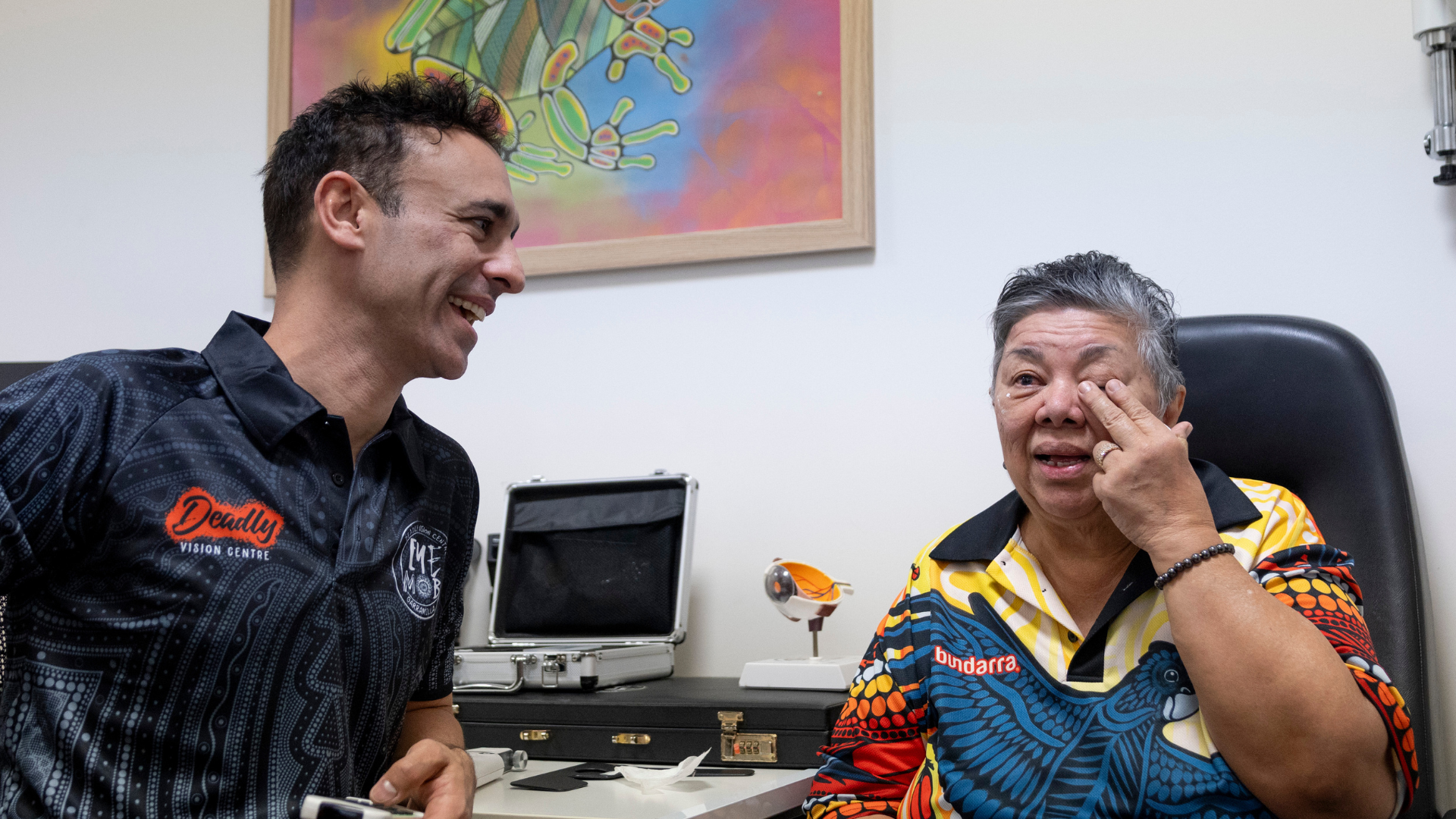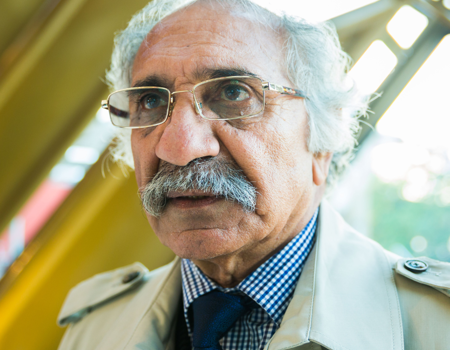Why Aboriginal and Torres Strait Islander health is still on our agenda
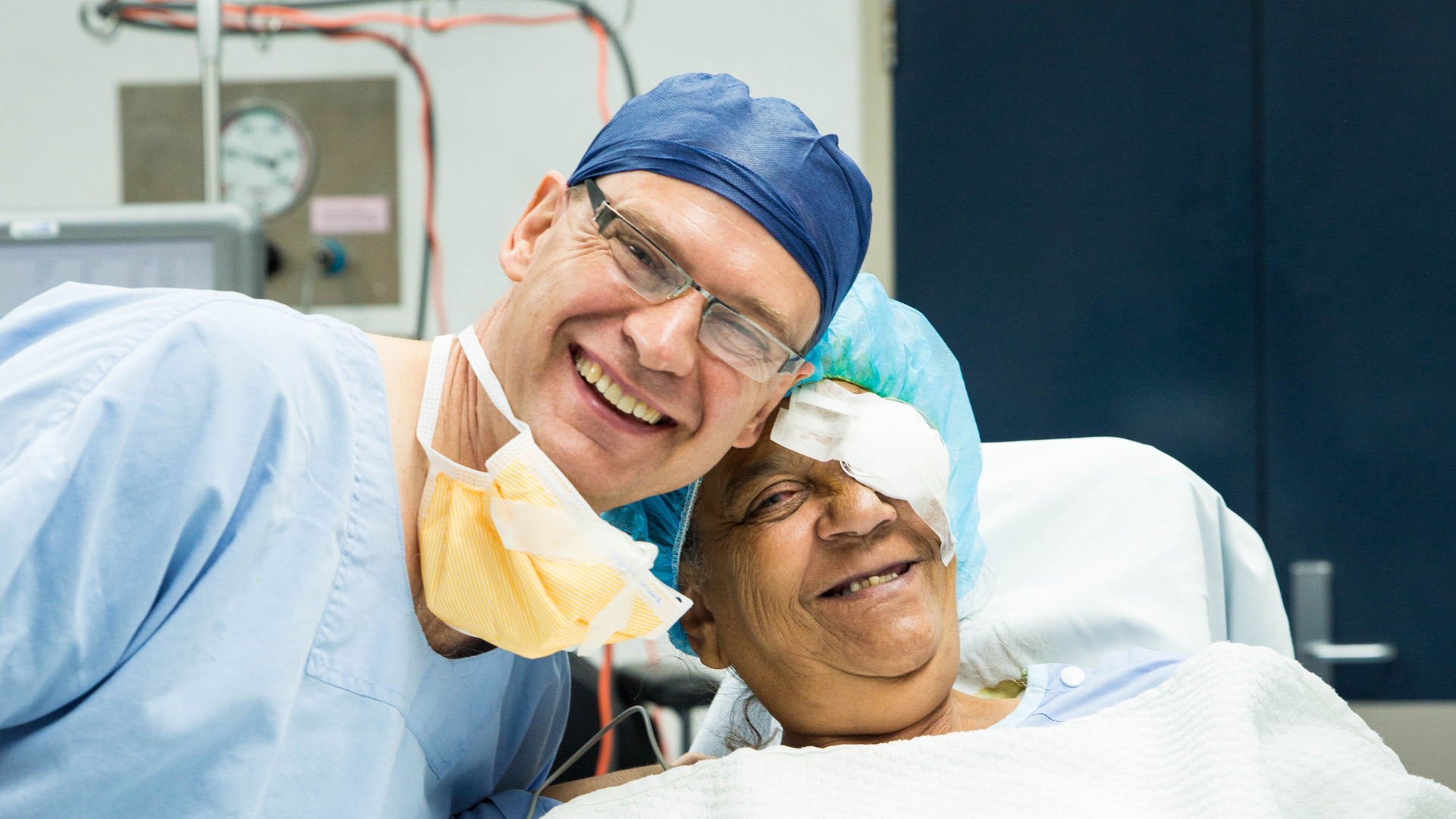
When Fred Hollows began his mission to address the inequalities in eye health, he began to see and understand the significant injustices that Aboriginal and Torres Strait Islander Peoples face in all parts of life.
His deep respect for Aboriginal and Torres Strait Islander peoples sparked his advocacy for their right to good sight and health. This remains the cornerstone of The Fred Hollows Foundation’s work today.
Aboriginal and Torres Strait Islander Peoples need all Australians to support their leadership and their fight for equity by standing next to them as true allies. As an ally, The Foundation is committed to ending avoidable blindness and improving the health of Aboriginal and Torres Strait Islanders through our Indigenous Australia Program.
The Foundation and our supporters have helped make progress to close the gap in eye health outcomes between Aboriginal and Torres Strait Islander Australians and other Australians. In the 1980s, Aboriginal and Torres Strait Islander people were 10 times more likely to go blind. In 2008, this was reduced to six times, and by 2016, this was halved to three times more likely to be blind.
Despite the progress that has been made, there is still much more to be done. Keep on reading to learn more about why Aboriginal and Torres Strait Islander health is still on our agenda.
In a hurry?
Click on the link below to go directly to what you’re most interested in:
- Why are there still health inequities between Aboriginal and Torres Strait Islander Australians and other Australians?
- How can improved health outcomes help with reconciliation and healing?
- How can we continue to close the eye health gap?
Why are there still health inequities between aboriginal and torres strait islander australians and other australians?
Aboriginal and Torres Strait Islander Peoples experience inequitable health and social outcomes in a range of areas, all of which are complex, interconnected, and multifaceted.
A key issue is the lack of adequate public eye health services and access to existing services. Most ophthalmologists work in the private sector; however, Aboriginal and Torres Strait Islander people are less likely to have private health insurance. According to the Australian Institute of Health and Welfare, there are only around 10,000 ophthalmology specialists Australia-wide, with the workforce supply reducing with increased remoteness. Around 21% of Aboriginal and Torres Strait Islander people live in remote areas compared to 2% of non-Indigenous Australians.
This means that too many Aboriginal and Torres Strait Islander people are stuck on waiting lists, while their vision worsens. Despite blinding cataract being 12 times more likely amongst Aboriginal and Torres Strait Islander adults than other Australians, they will wait 40% longer to receive the medical treatment they need, even though cataract can be fixed with a quick 20-minute procedure. Almost 70% of Aboriginal and Torres Strait Islander people who need cataract surgery have not yet received a diagnosis. Additionally, Australia is the only developed country to still have endemic trachoma, an eye disease that is only recorded in Aboriginal and Torres Strait Islander peoples and communities.
Even when Aboriginal and Torres Strait Islander people can access eye health services, they face additional hurdles, such as the lack of culturally safe care, extensive travel from remote communities to services, ongoing environmental health challenges and the hidden costs of surgery. These additional barriers mean that adequate and appropriate care is not easily accessible, leaving many Aboriginal and Torres Strait Islander people with poor eye health and in some cases vision loss.
Research has shown that culturally safe and responsive service delivery developed and delivered by the community significantly impacts health outcomes. Indigenous health requires a responsive approach that acknowledges and respects the diverse needs, beliefs and practices of Aboriginal and Torres Strait Islander communities.
This is why The Foundation is proud to partner with Aboriginal (and Torres Strait Islander) Community Controlled Organisations to deliver eye health programs across the country and to empower Aboriginal and Torres Strait Islander communities to self-determine eye health. The Foundation continues to advocate for and implement culturally safe and inclusive healthcare policies, programs and services that cater to Aboriginal and Torres Strait Islander people.
By keeping Indigenous health on the agenda, The Fred Hollows Foundation is striving to achieve equitable eye health outcomes while upholding Aboriginal and Torres Strait Islander peoples’ right to good sight, free, prior and informed consent and self-determination.
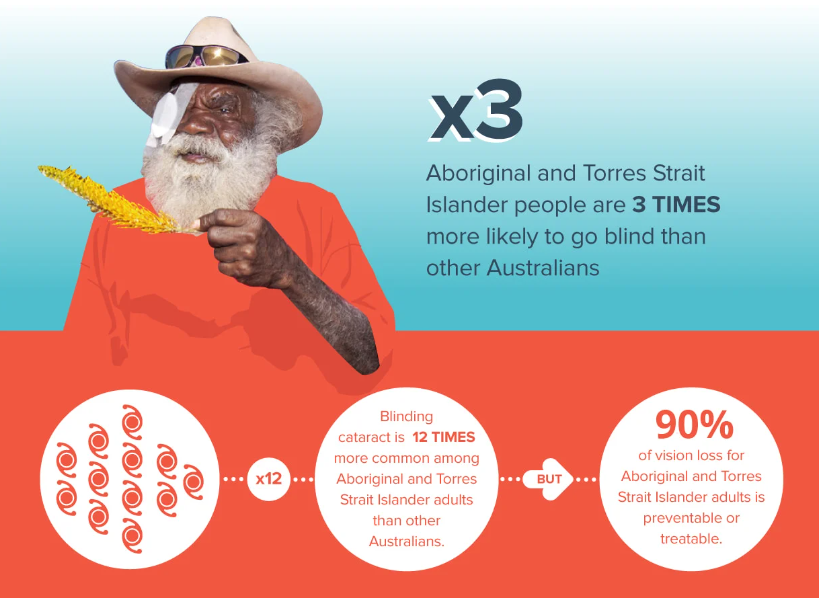
How can improved health outcomes help with reconciliation and healing?
Prioritising Aboriginal and Torres Strait Islander health is a crucial component of advancing reconciliation and healing between Indigenous and non-Indigenous Australians. Reconciliation depends on all Australians coming together to acknowledge the injustices of the past and striving to build a more inclusive and equitable society.
Historical injustices, such as racially discriminatory policies and system inequalities, have profoundly impacted health outcomes. An equitable Australia is one where Indigenous and non-Indigenous people alike have fulfilling lives in which they prosper and thrive physically, economically, spiritually, and socially. Australians must come together to develop and deliver appropriate health services to overcome the disparity in eye health outcomes. Much like reconciliation, improving health outcomes of Aboriginal and Torres Strait Islanders depends on and requires significant work and effort from all Australians.
Our vision for reconciliation is one where Aboriginal and Torres Strait Islander people can exercise their right to sight and good eye health.
Improving Aboriginal and Torres Strait Islander health has far-reaching economic and social benefits. Healthy individuals can participate fully in society, contribute to the workforce, and engage in economic activities. By investing in Aboriginal and Torres Strait Islander eye health, we can foster sustainable outcomes which can reduce the economic and social burden associated with avoidable blindness.
The Foundation is not only working to deliver high-quality, community developed and led policies and programs, but also culturally appropriate eye care services to Aboriginal and Torres Strait Islander people across Australia. The Foundation also strives to support Aboriginal and Torres Strait Islander Peoples through our ongoing social justice work.
View our Reconciliation Action Plan here.
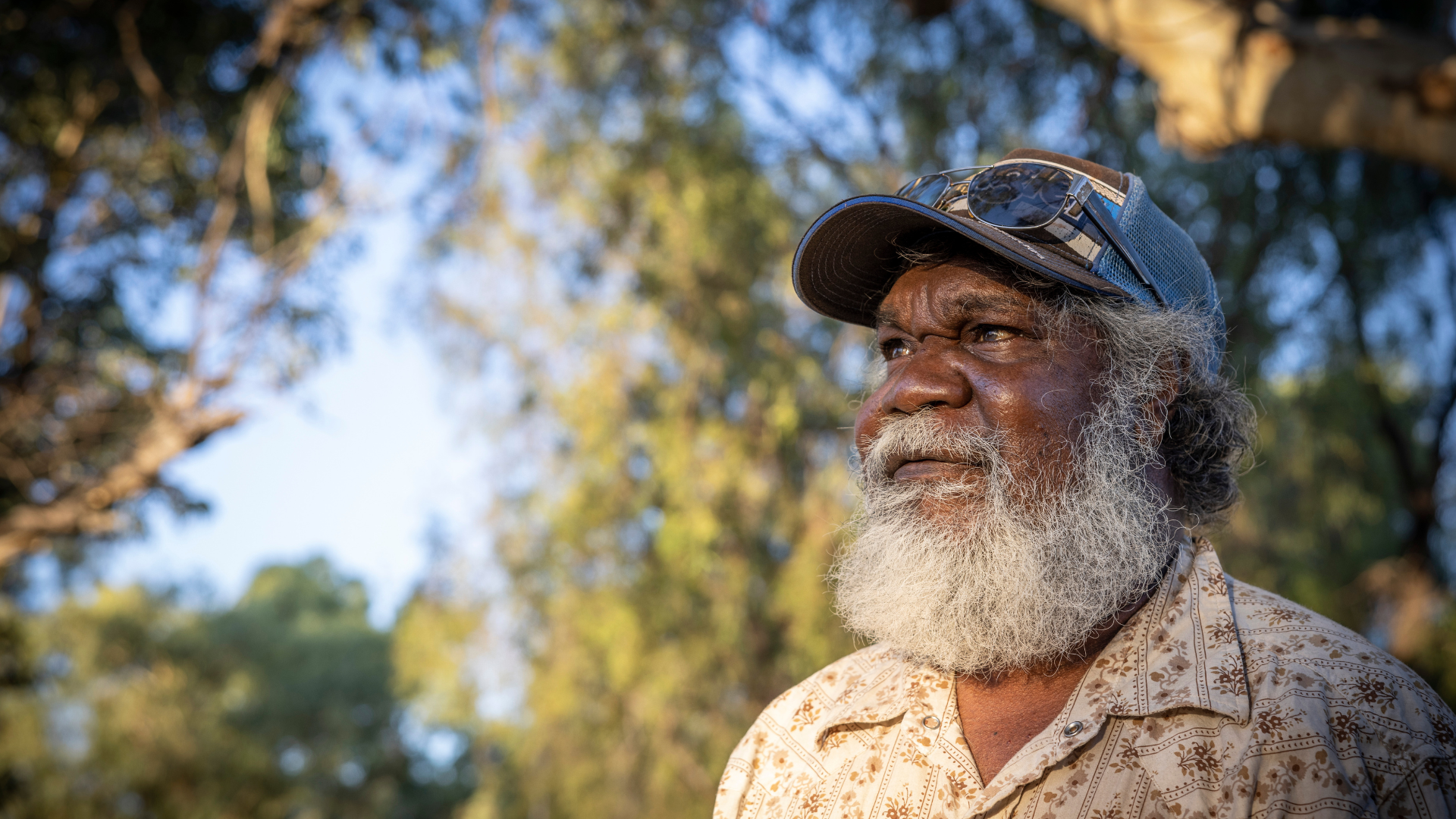
Photo Credit: The Fred Hollows Foundation
How can we close the eye health gap?
Since 2006, Australia's peak health bodies, NGOs and human rights organisations have worked together, aiming to achieve health and life expectancy equality for Aboriginal and Torres Strait Islander Peoples through the 'Close the Gap' Campaign. The Fred Hollows Foundation actively participates in and supports the steering committee of the campaign.
By working to improve health systems and advocating for bipartisan support and long-term funding and solutions, we believe that by 2030, every Aboriginal and Torres Strait Islander child could live a long and healthy life – like any other Australian child.
Empowerment is at the heart of what we do, and our work is about empowering Aboriginal and Torres Strait Islander Peoples. That’s why we have been vocal advocates of a Voice to Parliament. A Voice to Parliament, designed by Aboriginal and Torres Strait Islander Peoples, is a vital step towards improving Aboriginal and Torres Strait Islander health outcomes. A constitutionally enshrined Voice would ensure First Nations Peoples will always be able to provide frank and fearless advice to the government.
We encourage you to learn more about Voice, Treaty and Truth-telling, as outlined in the Uluru Statement from the Heart.
COVER PHOTO: Alan McDonald
Meet the author
Related articles
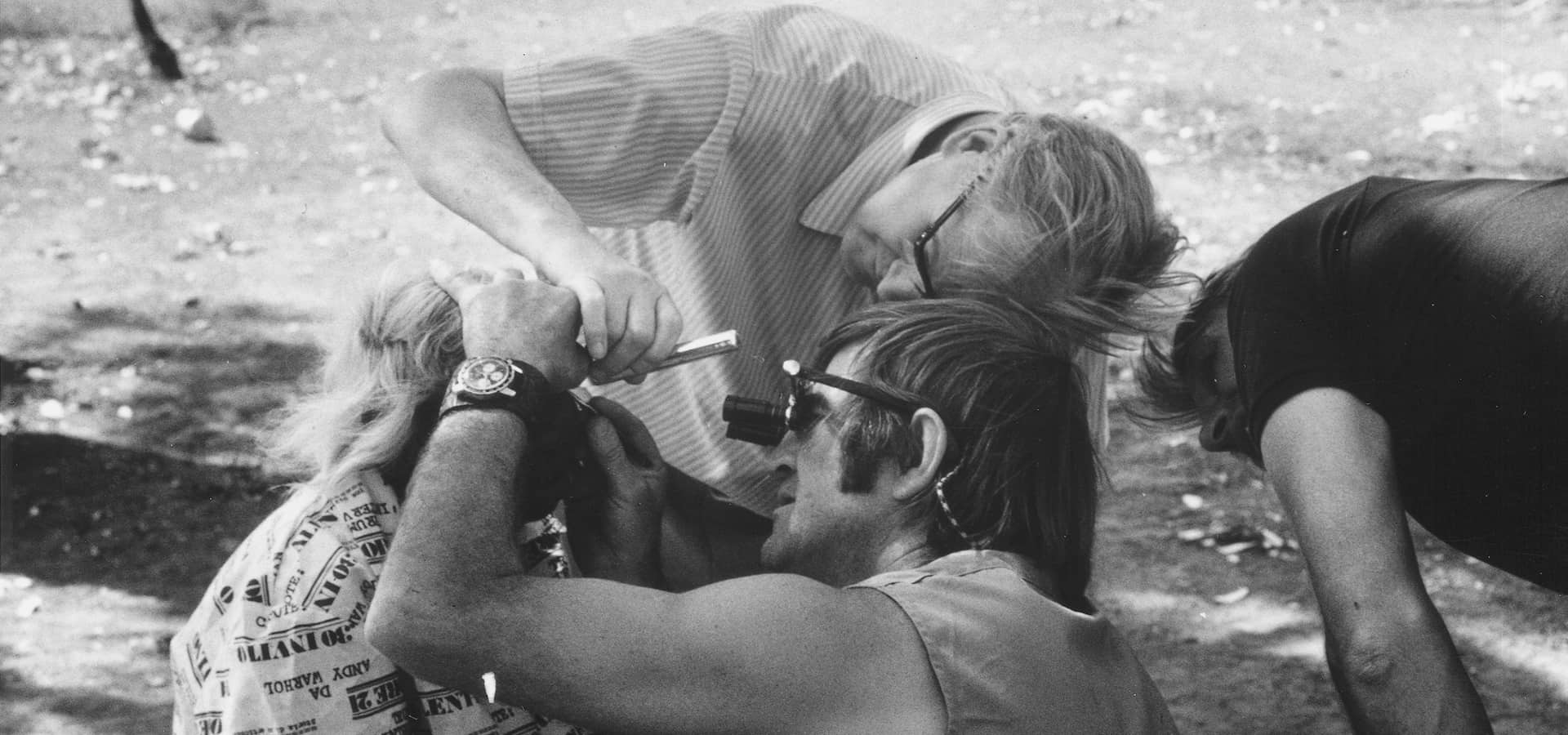
Why we're still fighting to end trachoma, 50 years on

The Fred Hollows Foundation Treaty Support Statement - Victoria
